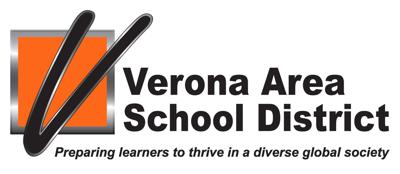The Verona Area School District (VASD) will soon implement new social studies curricula for K-9 students following unanimous approval from the Board of Education during a Monday, April 15 meeting.
The new curricular resources – Teacher Created Materials (TCM) for K-5 students and National Geographic for those in grades 6-9 – aims to address needs identified by staff and student data for standards-based, age-appropriate curriculum that represents the diversity of learners and offers multiple perspectives.
Director of secondary education Amy Engelkins was joined by two district staff members at the April 15 board meeting to discuss the need for a new social studies curriculum and the work that informed the selection process.
Social studies a focus area
Engelkins described curriculum as just one aspect of VASD’s teaching and learning framework. It ultimately supports teachers through resources and grade-level standards.
“Curriculum is an important component of our teaching and learning framework, but it’s certainly not all the magic that happens in the classroom,” she said. “It’s one component and one tool by which teachers really bring that magic to life.”
In 2022, VASD completed a K-12 curriculum audit that aimed to identify the current state of curriculum throughout the district. It looked into topics such as the number of resources available for teachers and support for multilingual learners and students with IEPs (Individualized Education Plan).
A.J. Simonini, social studies curriculum and learning specialist at Verona Area High School, said the 2022 audit identified social studies as an area of need for the district. It demonstrated a lack of standards-aligned resources and instruction, along with a lack of coherence among schools of similar grade levels.
The audit also found that many teachers were creating their own materials, which included translating information for students who are multilingual or in the Two-Way Immersion (TWI) program. Teachers themselves provided additional feedback, such as offering multiple perspectives of historical events.
With this feedback in hand, a team of 30 staff members began to meet and discuss a new curriculum. Staff on the team ranged from K-12 teachers to curriculum specialists and leaders in multilingual programming and special education.
The curriculum team met a total of 10 times, for two hours each, between September 2023 and February 2024. Both Simonini and Kaite Mohr, language arts and equity specialist at Sugar Creek, participated in the selection process.
The curriculum team worked together to create different versions of evaluation tools before settling on one to use, Mohr told the board. This helped the team narrow down potential curricula from five options to two.
After meeting with vendors who answered questions and listening to staff feedback, the team made a final recommendation of TCM for K-5 students and National Geographic for 6-9 students.
Positive feedback on new curricula
According to Mohr, the curriculum team selected TCM for K-5 students due to its alignment with Wisconsin standards, its integration of language arts standards and its Spanish resources.
Simonini explained that National Geographic was selected as the curriculum for students in grades 6-9 for similar reasons, including its availability in Spanish, alignment with state standards and support for the transition between middle and high school
Additionally, Engelkins said both curricula represent the diversity of identities and cultures among students. Some examples include chapters about “Asian American Civil Rights” and “The Chicano Movement & Successes” in a National Geographic textbook. At the elementary level, TCM provides students with primary sources, like the Chinese Exclusion Act of 1882, to examine through varying perspectives.
Though Engelkins said there is not “one perfect curriculum,” there will be opportunities for educators to collaborate and receive ongoing support. This includes finding ways to relate current events to historical contexts.
Board deputy clerk John Porco spoke highly of the new curricula, especially in regard to its use of primary sources, or first-hand accounts of events.
“To see that primary document and then ask (students) to interpret it and think critically about it is just such a powerful tool,” he said. “I love how it opens up avenues for our students to think differently about things and assemble narratives about our history that matter to them.”
Porco also liked the multimodality of the curricula in that it engages students with different forms of communication, such as speaking, reading, writing and listening.
“We know, through decades of research at this point, that effective education requires multimodal approaches,” he said. “To have that built in, and obviously with the dual language components as well…They just did not make a curriculum like this when I was growing up.”
Superintendent Tremayne Clardy thanked team members involved with the process, along with the school board for its emphasis on student voice – something he said is necessary when selecting a curriculum.
“I think if (students) could all say one thing in totality – in one way or another – they have made it clear, ‘We are not invisible,’” he said. “This process has brought their work and representation to the forefront.”
“It’s far more than just this purchase – it’s really a life-changing event for each student in the Verona Area School District through the magic of what happens in the classroom,” he added.


